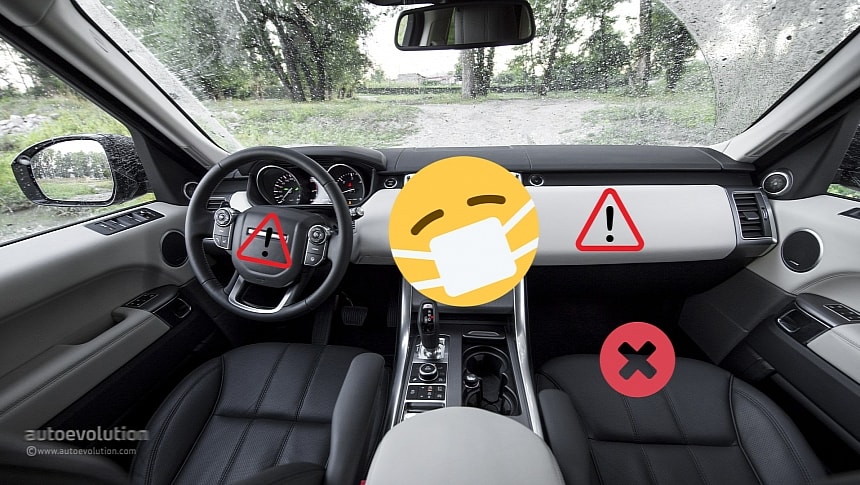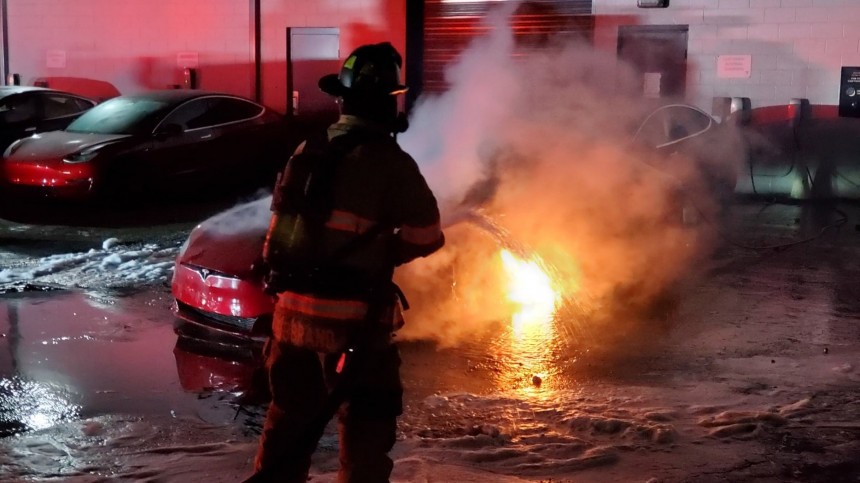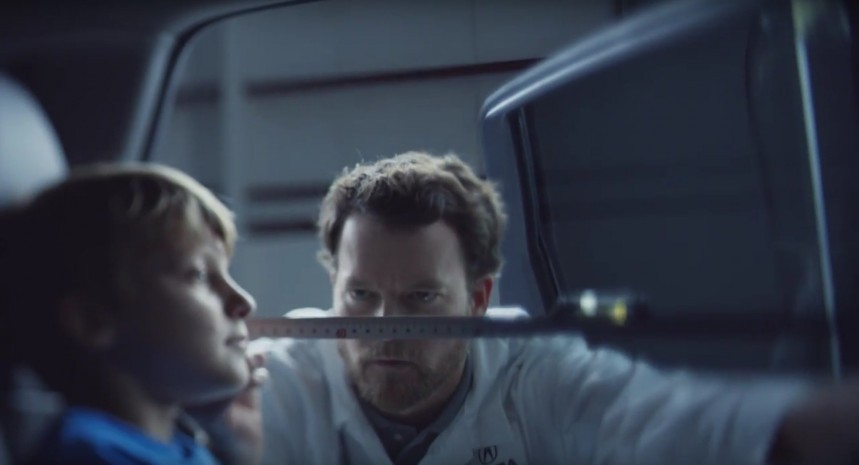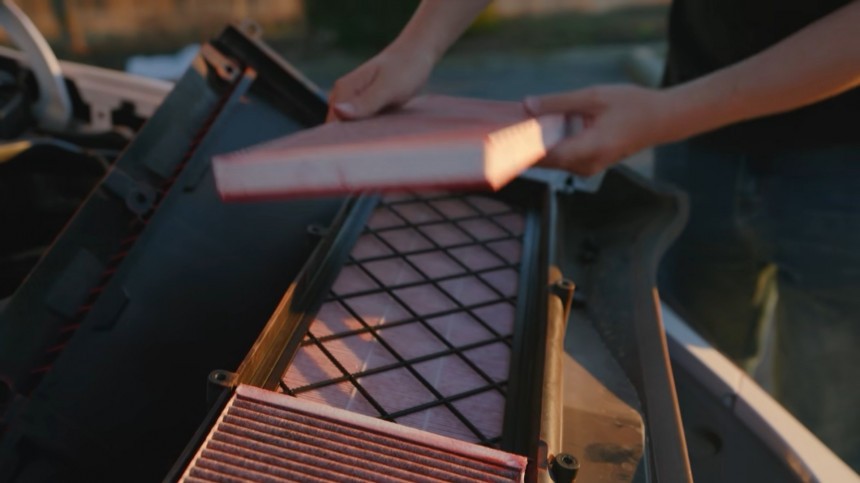It doesn't matter if you drive a Bentley or a Nissan. All cars must adhere to many federal safety standards if manufacturers want to sell them in the US. As it turns out, regulators haven't kept up with scientific discoveries. Car companies had other things to worry about as well, so they just rolled with all of it. But we might want to take heed of what scientists and experts have to say. It could spare us much potential suffering.
The Green Science Policy Institute, Duke University, and the University of Toronto collaborated on a research project to determine whether the air in our cars is dangerous. They suspected that flame-retardant chemicals put inside seats and on some dashboards could release carcinogens, neurotoxins, and endocrine disruptors. In small quantities, our immune system counters these forms of matter. But when they accumulate, fighting them off becomes almost impossible.
Such research may seem redundant, considering that virtually anyone in the US has a car. As we recently reported, around 92% of those living in North America get around by car. Even if it comes to covering hundreds of miles in a day, people still like to drive. However, most Americans (and even Canadians) need a vehicle for the simplest things – going to work or for a grocery run. The automobile is an essential part of the average US household.
So, knowing if your car could pose a risk to your well-being is a thing of importance to millions of people.
Researchers analyzed flame retardants in over 100 vehicles from 22 brands and discovered that the Federal Motor Vehicle Safety Standard (FMVSS) 302 might need some updating.
They found that almost all the post-2015 cars analyzed (which have officially been sold in the US) have interior materials that release all sorts of nasty stuff into the cabin, which includes potential carcinogens and other health disruptors.
If you're worried about this and want to act in your kid's best interest, look for flame-retardant-free car seats. They are generally a bit pricier, but the investment could be worth it.
Half of the vehicles were analyzed during summer, which revealed that high temperatures increased the concentrations of bad chemicals in the cabin air by up to five times. Researchers also examined the seat foam and found that over half of the samples contained harmful flame retardants that were present solely because of FMVSS 302.
Flame retardants are supposed to stop small fires from expanding quickly, but when they eventually burn, they produce even more smoke and toxic gases. They argue that firefighters are the ones who risk their health the most when trying to extinguish a fire.
An International Association of Fire Fighters expert claims that putting all those chemicals inside cars does very little to prevent fires. Instead, they pose a serious health risk for drivers, their passengers, and first responders when a car catches fire, and someone must deal with it.
Essentially, the organizations want the fabrics, foams, and other materials to be free of flame retardants, which allegedly do nothing important to stop cars from burning to a crisp.
"These chemicals will only delay fires for seconds, and when they burn, the flame retardants create additional smoke, soot, toxic gases, dioxins, and furans, which are the main causes of fire deaths and contribute to firefighter cancer," says Consumer Reports.
The researchers also say that drivers should stop using the air recirculation function and start washing their hands every time they use their car, especially before eating.
Moreover, they ask automakers to discuss updating FMVSS 302 with NHTSA officials and change their designs to minimize flame retardant usage until regulations change.
Researchers suggest that tightly woven textiles could be a great alternative to dangerous flame-retardant materials.
Unless it's cold or raining, the obvious and simplest solution is to open the windows and allow fresh air in. Of course, if you live in a polluted city or find yourself in a traffic jam where people don't turn off their engines, that's not going to work in your favor. Some people are also sensitive to the noise made by the draft, while others can simply prefer having the A/C on full blast. But opening your car's windows is the fastest way to cleaner cabin air.
Some new cars also have sensors that measure both the outside and inside air quality or fancier A/C systems that can filter even the smallest particles. The ionizer found in recent BMW models is a good example in this regard. Together with nanofiber filters, they work to eliminate odors and minuscule specs of dust.
Tesla is famous for putting HEPA filters on its pricier models, but that doesn't eliminate the flame retardant emission risk. You would still have to vent the cabin.
Talking about software-defined cars, pre-conditioning is another handy option for owners who can control their vehicles remotely or program their A/C systems to run at specific intervals. A lower temperature doesn't automatically guarantee that your vehicle's cabin will be free of carcinogens, but you'll at least avoid a buildup of these harmful chemicals.
Carrying a small fire extinguisher in the car can also prevent the release of harmful chemicals into the air, and you might even be able to save your ride from burning to a crisp. It doesn't cost much or take up space, but it can come in clutch in a tough situation.
EVs don't have an exhaust system, but they're fast and heavy, which can result in accelerated tire wear. Rubber ring particles can end up in our waters and even lungs.
Moreover, mining for all the critical minerals needed in batteries, refining them, and putting them in cells that eventually become battery packs is a very carbon-intensive process, especially when you account for the complicated non-Chinese supply chains.
But this sense of inevitable doom can't stop us from living our lives. We replaced horse-drawn carriages with cars because cities and other parts of the country were dealing with impossible quantities of manure. Now, we're in the process of gradually replacing gas- and diesel-powered personal vehicles with EVs for the sake of the environment because we know for sure that pollution is a major global issue.
The researchers' discoveries can raise new concerns for car owners. But if their findings lead to better cars for all of us, then that's a win in my book.
Such research may seem redundant, considering that virtually anyone in the US has a car. As we recently reported, around 92% of those living in North America get around by car. Even if it comes to covering hundreds of miles in a day, people still like to drive. However, most Americans (and even Canadians) need a vehicle for the simplest things – going to work or for a grocery run. The automobile is an essential part of the average US household.
So, knowing if your car could pose a risk to your well-being is a thing of importance to millions of people.
Researchers analyzed flame retardants in over 100 vehicles from 22 brands and discovered that the Federal Motor Vehicle Safety Standard (FMVSS) 302 might need some updating.
We may want to take this seriously
The study's lead author, Rebecca Hoehn, claims that this is a "significant public health issue" because drivers spend an hour or more in their cars every day. She thinks that children are especially at risk because they breathe even more air while traveling with parents or friends.If you're worried about this and want to act in your kid's best interest, look for flame-retardant-free car seats. They are generally a bit pricier, but the investment could be worth it.
Half of the vehicles were analyzed during summer, which revealed that high temperatures increased the concentrations of bad chemicals in the cabin air by up to five times. Researchers also examined the seat foam and found that over half of the samples contained harmful flame retardants that were present solely because of FMVSS 302.
Flame retardants are supposed to stop small fires from expanding quickly, but when they eventually burn, they produce even more smoke and toxic gases. They argue that firefighters are the ones who risk their health the most when trying to extinguish a fire.
Doing something about it
The Green Science Policy Institute and Consumer Reports partnered up and launched a petition that asks the National Highway Traffic Safety Administration (NHTSA) to update FMVSS 302.Essentially, the organizations want the fabrics, foams, and other materials to be free of flame retardants, which allegedly do nothing important to stop cars from burning to a crisp.
"These chemicals will only delay fires for seconds, and when they burn, the flame retardants create additional smoke, soot, toxic gases, dioxins, and furans, which are the main causes of fire deaths and contribute to firefighter cancer," says Consumer Reports.
The researchers also say that drivers should stop using the air recirculation function and start washing their hands every time they use their car, especially before eating.
Moreover, they ask automakers to discuss updating FMVSS 302 with NHTSA officials and change their designs to minimize flame retardant usage until regulations change.
Preventive measures anyone can take
Now, it's obvious that we can't just scrap our cars and replace them with horses, bicycles, or e-bikes. However, we have a couple of solutions at hand. They don't guarantee that the air you breathe will be as clean as in Hawaii or Maine (the two US states with the best air quality), but you'll at least prevent the buildup of harmful chemicals in your ride's cabin.Unless it's cold or raining, the obvious and simplest solution is to open the windows and allow fresh air in. Of course, if you live in a polluted city or find yourself in a traffic jam where people don't turn off their engines, that's not going to work in your favor. Some people are also sensitive to the noise made by the draft, while others can simply prefer having the A/C on full blast. But opening your car's windows is the fastest way to cleaner cabin air.
Some new cars also have sensors that measure both the outside and inside air quality or fancier A/C systems that can filter even the smallest particles. The ionizer found in recent BMW models is a good example in this regard. Together with nanofiber filters, they work to eliminate odors and minuscule specs of dust.
Tesla is famous for putting HEPA filters on its pricier models, but that doesn't eliminate the flame retardant emission risk. You would still have to vent the cabin.
Carrying a small fire extinguisher in the car can also prevent the release of harmful chemicals into the air, and you might even be able to save your ride from burning to a crisp. It doesn't cost much or take up space, but it can come in clutch in a tough situation.
Fret not!
All in all, if you consider all the negative aspects of car ownership, chances are you might want to never set foot inside one again. Internal combustion engine-powered vehicles burn fossil fuels (which are another separate environmental concern because of evaporation) and release greenhouse gases and other dangerous air pollutants. Then, brake dust comes in to seal the deal.Moreover, mining for all the critical minerals needed in batteries, refining them, and putting them in cells that eventually become battery packs is a very carbon-intensive process, especially when you account for the complicated non-Chinese supply chains.
But this sense of inevitable doom can't stop us from living our lives. We replaced horse-drawn carriages with cars because cities and other parts of the country were dealing with impossible quantities of manure. Now, we're in the process of gradually replacing gas- and diesel-powered personal vehicles with EVs for the sake of the environment because we know for sure that pollution is a major global issue.
The researchers' discoveries can raise new concerns for car owners. But if their findings lead to better cars for all of us, then that's a win in my book.
Sign the @CRAdvocacy petition to @NHTSAgov calling for a modern flammability standard that doesn’t expose us to these toxic chemicals in our vehicles. https://t.co/0Fu56hjknO
— Consumer Reports (@ConsumerReports) May 9, 2024











